Beta-sitosterol (β-sitosterol)
Conclusion:
β-sitosterol is a well-known phytosterol that is abundant in plants, vegetables, fruits, nuts and seeds.
Its health-promoting potential is enormous and, due to its properties, it is advisable to consume it as naturally as possible in the form of various fresh and unprocessed foods.
General information
In the course of primary and secondary metabolic processes, plants produce various bioactive compounds with health-promoting properties for humans, including beta-sitosterol (β-sitosterol), which is found in numerous natural plant foods.
The articles Nutrients explained, Secondary metabolites (phytochemicals) and A vegan diet can be unhealthy provide an overview of the classification of various substance groups, their occurrence in certain plants and foods and possible positive health effects on humans - enriched with valuable information on avoidable nutritional errors for a comprehensively healthy diet.
The daily requirement for β-sitosterol is 250-300 mg, with normal absorption of 5% in the gastrointestinal tract. However, it is only possible to reduce for example cholesterol levels by 10-20 % from approx. 2 g daily (the study cited assumes a minimum daily amount of 1,5-3 g β-sitosterol in order to be able to demonstrably reduce LDL cholesterol levels in the human body by 8-15 %3). More than this in the long term is harmful. β-Sitosterol enriched or as a product is questionable.
Basics
β-Sitosterol (C29H50O), also known as 3β-stigmast-5-en-3-ol, 22:23-dihydrostigmasterol, α-dihydrofucosterol, cinchol, cupreol, rhamnol, quebrachol and sitosterol, is an important plant phytosterol. Phytosterols are an important class of secondary metabolites that chemically belong to the steroids, a subgroup of isoprenoids.
The name β-sitosterol is derived from its occurrence in wheat grain (Greek sitos = grain, wheat). Of the approximately 40 different phytosterols identified, β-sitosterol, campesterol and stigmasterol are the most frequently investigated in studies. β-Sitosterol, campesterol and stigmasterol make up about 65 %, 30 % and 3 % respectively of the main components of the human plant-based diet.4,6
Sterols such as β-sitosterol are essential bioactive components in the lipid bilayer of cell membranes in plant, fungal and animal cells. They ensure membrane stability and regulate important biological processes such as polarized growth of root hairs and pollen tubes, organization of the cytoskeleton, signal transduction, adaptation to temperature fluctuations, fluidity of membranes and cellular organization.
The plant-based β-sitosterol has a chemical structure that is similar to our (animal) cholesterol. However, our body does not produce β-sitosterol itself, but can only absorb it through the consumption of plant foods. The β-sitosterol found in the fatty parts of plants is therefore very important for human nutrition.3
Cholesterol is not bad for us humans per se. In fact, it is vital and is used for the formation of our cell membranes, for the production of bile acid for fat digestion and of certain hormones (oestrogen, testosterone, cortisone, etc.) as well as vitamin D. However, cholesterol is divided into "good" (HDL = high density lipoprotein) and "bad" (LDL = low density lipoprotein) cholesterol. While HDL binds the cholesterol circulating in the blood and returns it to the liver, LDL stores the cholesterol in the walls of our blood vessels, which under certain circumstances leads to arteriosclerosis (calcification of the arteries).
It is believed that β-sitosterol lowers LDL cholesterol levels in at least 3 different ways: it reduces the body's own cholesterol synthesis, makes dietary cholesterol less soluble (and thus reduces its absorption) - and it causes the body to form more receptors for LDL cholesterol, which bind it and absorb it into the cells.3 This can have a positive effect on high cholesterol levels and reduces the risk of coronary heart disease (heart attack, arteriosclerosis). In addition, β-sitosterol has an anti-carcinogenic effect on various types of cancer and supports the body's natural recovery processes.4,6
Chemical properties and biosynthesis
Sitosterols can be divided into five groups: α1, α2, α3, β and γ, with β- and γ-sitosterols being the most thoroughly researched.3
β-Sitosterol is a lipid-soluble molecule with a molecular mass of 414,7 g/mol, a white color with a waxy appearance, a characteristic odor and a melting point at 140 °C. The presence of an ethyl group at the 24th carbon distinguishes sitosterol from its animal counterpart cholesterol, with which it has structural similarities. β-Sitosterol belongs to the unsaturated sterols with a double bond at C-5,6 in the second ring of the sterol nucleus. The synthesis of β-sitosterol occurs via chemical modifications such as methylation, hydride shifts, reduction and structural changes - either via mevalonate pathway or deoxyxylulose pathway. The "triterpene squalene" is considered the starting compound. The research identified β-sitosterol by spectral fingerprinting using infrared and magnetic resonance techniques.3,4,6
Occurrence in foods
Cultivation conditions (temperature, location) and genetic factors (varieties) influence the phytosterol content in plant sources - for example in soybean, sunflower and rapeseed oils. The phytosterol content changes during the refining of vegetable oils. β-Sitosterol is found in various plant parts such as rhizomes, leaves and plant tissues as well as fruits. It is the predominant phytosterol in cereals with proportions of 49-64 %. In vegetables and fruits, β-sitosterol also provides a large percentage of the total phytosterols with 44-86 % and 72-92 % respectively. In vegetable oils, the proportion of β-sitosterol in total sterols is 91% for avocado, 95% for walnut, 50-60% for rapeseed and 52-61% for soybean. However, this is only the ratio, the amount itself is another matter!3 Seeds contain a lot, such as pistachios (raw) around 200 mg/100g9, roasted 210 mg/100g9, pine nuts and almonds around 130 mg/100g9, pecan nuts 117 mg/100g9. This is more concentrated in oils.
According to the USDA9 and a study published in 200110 , avocados exhibit 76 mg/100g (62-98), which is by far the highest content among the fruits analyzed so far. The figures should be taken with a pinch of salt! There are still too few studies on the vast majority of phytochemicals.
β-Sitosterol has particularly been detected in the following oils: Rice bran oil (165 mg/100g), corn (germ) oil (539-590 mg/100g), canola oil (457-879 mg/100g), rapeseed oil (377-413 mg/100g, USDA9), sesame oil (322-335 mg/100g), peony oil (258 mg/100g), peanut oil (189-203 mg/100g), sunflower oil (170-309 mg/100g), soybean oil (166-189 mg/100g), linseed oil (157-206 mg/100g, USDA), grape seed oil (146-160 mg/100g), walnut oil (140-165 mg/100g), olive oil (140-152 g/100g), avocado oil and camellia oil (50 mg/100g).3
β-Sitosterol is also found in cereals such as barley (44-48 mg/100g), rye (36-61 mg/100g), wheat (29-49 mg/100g), rice (38 mg/100g) and oats (24-32 mg/100g).3
Fresh vegetables and fruits contain β-sitosterol. Larger amounts are found in cauliflower (41 mg/100g), peas (41 mg/100g), broccoli (28-35 mg/100g), Brussels sprouts and Cabbage sprouts (28-34 mg/100g), black-eyed peas (19 mg/100g), lettuce (11-17 mg/100g), carrots (11-14 mg/100g), Chinese cabbage (10 mg/100g), garlic (9 mg/100g), green pepper (8 mg/100g), onion (6-7 mg/100g), spinach (5 mg/100g), potatoes (2-5 mg/100g), cucumber (4 mg/100g), tomatoes (2-3 mg/100g) and in fruits and berries such as passion fruit (34 mg/100g), navel oranges (27 mg/100g), mandarins (21 mg/100g), mango (19 mg/100g), oranges (17-20 mg/100g), kiwi (13 mg/100g), peach (12 mg/100g), apricots (12 mg/100g), apples (13-16 mg/100g), bananas (8-12 mg/100g), strawberries (7-11 mg/100g) and watermelon (1-2 mg/100g).3
According to Dr. Duke's Phytochemical and Ethnobotanical Databases (U.S. Department of Agriculture), plant sources with the highest amounts of β-sitosterol are:8
- Tucum seed oil (Astrocaryum vulgare): (783'100 ppm) = 78'310 mg/100g (intended for skin oils only)
- Prickly pear seed oil (Opuntia ficus-indica): (680'000 ppm) = 68'000 mg/100g (intended for skin oils only)
- Kava root (Piper methysticum): (166'000 ppm) = 16'600 mg/100g
Other plant sources have significantly lower values:
- Feverfew seed oil (Tanacetum parthenium): (16'000 ppm) = 1600 mg/100g
- Cherimoya seeds (Annona cherimola): (14'000 ppm) = 1400 mg/100g (April 2024 it is not certain whether you can chew raw)
- Chinese boxthorn, blossoms (Lycium chinense): (10'200 ppm) = 1020 mg/100g
- Midland hawthorn, blossoms (Crataegus laevigata): (7800 ppm) = 780 mg/100g (April 2024 we found no evidence that it is not edible raw)
- Large-sepalled hawthorn, blossoms (Crataegus rhipidophylla): (6200 ppm) 620 mg/100g (April 2024 we found no evidence that it is not edible raw)
- Amla tree or Ambla tree fabric (Phyllanthus emblica): (5500 ppm) 555 mg/100g
Still quite high values between 500 mg/100g and 200 mg/100g are found in (among others): Field bean seeds (Vicia faba), sesame seeds (Sesamum indicum), sunflower seeds (Helianthus annuus), tamarind fruit (Tamarindus indica), black cumin seeds (Nigella sativa), evening primrose seeds (Oenothera biennis), sage leaves (Salvia officinalis), cloves (Syzygium aromaticum) and mulberry leaves (Morus alba). Information on various plants with values below 200 mg can be found in the databases cited above.8,9
Absorption and metabolism
When ingested, β-sitosterol enters the stomach and then enters the intestinal cells mainly by passive diffusion. Together with bile salts and other phytosterols, it is embedded in the micelles and absorbed in the lymph cells. From there, β-sitosterol continues into the bloodstream and various tissues of the body. Its distribution in human tissues differs significantly from that of cholesterol, with the adrenal glands, liver and adipose tissue being the primary storage sites. Most of the ingested β-sitosterol leaves the human body via bowel movement and in small amounts via kidneys. This results in a low systemic bioavailability of β-sitosterol and currently limits its use in systemic diseases.6
Possible side effects and intake recommendations
Phytosterols are susceptible to oxidation under various conditions (heat, light, pH, presence of metals) and form oxidized products. Although the oxidation of cholesterol has been thoroughly studied (enzymatic oxidation and autoxidation), less is known about the oxidation of phytosterols and their oxidized products. Oxidation of phytosterols can also occur during food processing such as cooking, frying, baking and storage. Oxidized forms of phytosterols have potentially toxic effects on human health, e.g. they cause cell death (apoptosis), modulation of lipid and glucose metabolism, proinflammatory cytotoxicity, atherosclerosis, oxidative stress and mitochondrial dysfunction. Preparing and processing fresh plant foods as gently as possible and eating raw and unprocessed plant foods reduce this risk.3
Harmful side effects may occur in case of hypersensitivity to β-sitosterol, sitosterolemia and during pregnancy and breastfeeding (lack of safety data from studies). Beta-sitosterol has a cholesterol-lowering effect, so people taking cholesterol-lowering medication should take this into account. β-Sitosterol has low water solubility and bioavailability. The absorption rates of β-sitosterol differ in animal species, e.g. 0% in rabbits, 4% in rats. In comparison, the rate is between 1,5-5,0 % in humans.
The positive effects of β-sitosterol require a daily intake of at least 150 mg. Depending on the dietary style, the daily intake varies between 180 and 400 mg: this means that a healthy person with a balanced dietary style takes in enough β-sitosterol with food. The value for non-vegetarians is at around 270 mg per day and therefore significantly lower than the one for vegetarians (around 350 mg per day).3,4,6
Food supplements
A natural plant-based intake of β-sitosterol is ideal. Commercial products often contain a mixture of plant sterols (β-sitosterol, campesterol or stigmasterol). Biochemically synthesized β-sitosterol is a white, odorless and tasteless powder; insoluble in water, slightly soluble in ethanol, highly soluble in chloroform. As a therapeutic approach, β-sitosterol and other phytosterols are added to diet margarine and dairy products such as yoghurts to lower LDL cholesterol.5 β-Sitosterol, together with other phytosterols, is labelled E499 as an additive in foods and is, for example, added to alcoholic mixed drinks as a stabilizer. The effect of added plant sterols on people with healthy cholesterol levels is controversial.4
Spectrum of health effects
Numerous experimental scientific studies have demonstrated a wide range of pharmacological properties of β-sitosterol, including anti-inflammatory, hepatoprotective, lipid-lowering, immunoregulatory, anti-atherosclerotic, antioxidant, anti-diabetic, as well as alleviating effects on prostate enlargement and protective effects on gastrointestinal diseases. The multifactorial biomedical properties of β-sitosterol include its neuroprotective effects, effects on metabolic diseases such as diabetes and obesity, and its antioxidant and anti-inflammatory activities.1,2,3,4
Anticarcinogenic effect
Epidemiological and experimental pharmacological screening studies anticipate anticarcinogenic therapeutic potential of β-sitosterol in leukemia, lung cancer, gastric cancer, breast cancer, colorectal cancer, ovarian cancer, cervical cancer, kidney cancer and prostate cancer. The anticarcinogenic effects of β-sitosterol are diverse and include various cellular processes, from proliferation to inflammation. Cancer cells often exhibit uncontrolled growth characterized by their ability to bypass regular cell cycle checkpoints. This leads to the formation of malignant tumors. β-Sitosterol acts on cancer cells by interfering with multiple cellular signaling pathways involved in growth, cell cycle arrest, cell death, metastatic invasion, new blood vessel formation and inhibition of inflammatory processes. Structural derivatives of β-sitosterol also produce anticarcinogenic effects. Due to its safety profile, low toxicity and efficacy, β-sitosterol is promising for potential use in cancer therapy.1,2,3,4
Studies on colorectal cancer show an inhibition by β-sitosterol with regard to the growth and invasion of cancer cells through the proliferation of intestinal epithelial cells. In lung and liver cancer, β-sitosterol activates similar mechanisms. Structural analyses indicate that the presence of a cholesterol-like side chain is crucial for the anticarcinogenic effect of β-sitosterol. The induction of apoptosis (programmed cell death) in cancer cells and the inhibition of their malignant proliferation by anticarcinogenic compounds are important strategies in the treatment of cancer. The use of β-sitosterol in combination with conventional chemotherapeutic drugs shows promising results. According to this, β-sitosterol has a better potential to inhibit the cell growth of prostate cancer cell lines (PC3 cells) than, for example, resveratrol - or in combination, it leads to a significantly stronger inhibition of the growth of cancer cells. There are also various approaches to improve the bioavailability of β-sitosterol, which aim to improve the absorption and transport of β-sitosterol in the body and thus potentially increase its therapeutic efficacy.6
Metabolic diseases and high cholesterol
Diabetes is a widespread metabolic disease. The number of people affected is increasing worldwide. Often associated with obesity, the disease increases the risk of diabetic kidney failure, cardiovascular diseases, retinal diseases and arterial diseases. Numerous studies show that β-sitosterol effectively lowers LDL cholesterol levels by inhibiting intestinal absorption. It also improves glycemic control in diabetics by increasing insulin sensitivity and lowering blood glucose levels. These effects of β-sitosterol emphasize its versatile health benefits and its potential for the treatment of metabolic diseases. Furthermore, β-sitosterol extracted from Thai eggplant (Solanum surattense) provides significant antioxidant and antidiabetic effects. β-Sitosterol isolated from grapefruit (Citrus grandis or Citrus maxima) exhibits anti-lipogenic bioactivity by regulating the expression of key enzymes in lipid metabolism. Lipophilic fractions from pistachios (Pistacia vera, USDA 198 mg/100g) contain a combination of β-sitosterol and polyunsaturated fatty acids that lead to a significant reduction in fat accumulation in mature fat cells. Numerous studies have shown that margarines enriched with β-sitosterol have a significant lowering effect on LDL cholesterol: the figure is 18 to 25 % with a daily intake of 25 g. β-Sitosterol competitively inhibits the absorption of exogenous cholesterol and the reabsorption of endogenous cholesterol from the intestine.6
Prostate problems
Results of several studies confirm the use of β-sitosterol to reduce prostate problems. In a randomized, double-blind, placebo-controlled study of 200 men with benign prostatic hyperplasia, half of the group routinely received 180 mg of β-sitosterol, while the rest received a placebo. After six months of the study, the group treated with β-sitosterol showed an almost 35 % improvement in urinary flow compared to the placebo group. Similarly, another study of 177 patients with benign prostatic hyperplasia showed significant improvements with the daily intake of 130 mg β-sitosterol. Similarly, taking 500 mg of saw palmetto oil enriched with β-sitosterol led to a significant decrease in symptoms and a reduction in residual urine volume.1,4
Antioxidant effect
Studies on the antioxidant efficacy of organic plant extracts confirm β-sitosterol as an excellent free radical scavenger with iron-reducing antioxidant effect and glucose tolerance activity, e.g. for multi-stemmed sage (Salvia multicaulis), pointed gourd (Trichosanthes dioica), pomegranate (Punica granatum), bitter melon (Momordica charantia), jyotishmati (Celastrus paniculatus) and prickly pear seed oils (Opuntia ficus-indica). The results indicate a protective effect of β-sitosterol on thymocytes because it modulates the redox balance within the cell and maintains the stability of the mitochondrial membrane.6
Anti-inflammatory effect
The long-term use of steroidal and non-steroidal anti-inflammatory drugs may lead to various diseases. Therefore, for effective treatment of long-term inflammation-related diseases, it is better to use herbal substances without adverse effects. Studies with extractions from various plants, such as Dissotis thollonii, an African medicinal plant, or purple nutsedge (Cyperus rotundus) show anti-inflammatory activity of β-sitosterol and efficacy in various inflammatory conditions in animal models. These include pneumonia, rheumatism, intestinal inflammation and inflammation-induced obesity. The effects were comparable to those of commonly used drugs such as acetylsalicylic acid.6
Antimicrobial effect
Infectious diseases currently account for more than 40 % of the global burden of disease. Unfortunately, the resistance of pathogenic microorganisms is increasing, which is why other effective antimicrobial agents are desirable. Research is showing increasing interest in the investigation of plant secondary metabolites with antibacterial and antifungal effects. Studies have also identified β-sitosterol as one of the compounds with strong antibacterial and antifungal activity.6
Neuroprotection
Alzheimer's disease is a progressive neurological disorder caused by a gradual reduction of cholinergic neurons in cortical and other regions of the brain. Current drugs may have some undesirable side effects. Novel AChE inhibitors with high activity and lower cost are urgently needed. In this context, extracts of Syrian sage (Salvia syriaca) and carob (Cassia timorensis, syn. Senna timoriensis) to obtain β-sitosterol exhibit significant in vitro AChE inhibitory properties, antioxidant effects in the treatment of memory disorders, and neuroprotective activity.6
Limitations and clinical gaps
Although preclinical studies indicate the anticarcinogenic potential of β-sitosterol, further comprehensive clinical studies are lacking to provide a better understanding of its safety, including potential phytosterolemia, efficacy and appropriate dosing in the context of conventional cancer therapies. The relatively low bioavailability of β-sitosterol raises questions about optimal dosing to achieve significant clinical effects. Synergistic or antagonistic effects with conventional chemotherapy drugs are largely unexplored and pose a challenge for its use as an adjuvant therapy. The quality and concentration of β-sitosterol from different plant sources may vary and lead to inconsistent clinical results. Studies on the long-term safety of β-sitosterol, particularly when used in combination with other cancer therapies, are still needed.6
Summary
β-Sitosterol is found in various vegetable oils, grains, seeds, nuts, pulses, vegetables and fruits and has enormous health-promoting potential. It belongs to the class of secondary metabolites (phytochemicals) with positive effects on human health. With its cholesterol-lowering, anti-carcinogenic and anti-inflammatory properties, β-sitosterol supports the body's natural recovery processes. The chemical-structural properties and biosynthesis of β-sitosterol are important aspects that determine its role in the human body. Although β-sitosterol is a promising option in the treatment of cancer, metabolic diseases and prostate problems, further clinical studies are needed to better understand its safety, efficacy and optimal dosage.
Despite the complexity of the topic, the following applies in practice: prefer a varied, plant-based and seasonal diet with organic food that is as unprocessed as possible. This will allow you to benefit optimally from the many positive effects of phytochemicals. We should eat plant-based foods as raw and unprocessed as possible or at least prepare them in a gentle way in order to fully exploit the nourishing potential of β-sitosterol. As the phytochemicals are often found in the outer layers, peel vegetables and fruits with consideration. As a vegan or omnivore, please read the article "A vegan diet can be unhealthy. Nutrition mistakes". Many of our newly edited food descriptions provide you with specific information on which of the substances mentioned are most prominently represented in the ingredient in question.
Bibliography - 10 Sources
Many researchers do not believe that Wikipedia is an authoritative source. One reason for this is that the information about literature cited and authors is often missing or unreliable. Our pictograms for nutritional values provide also information on calories (kcal).
| 1. | Alvarez-Sala A, Attanzio A et al. Apoptotic effect of a phytosterol-ingredient and its main phytosterol (Β-sitosterol) in human cancer cell lines. International Journal of Food Sciences and Nutrition. 2019;70(3):323–334. |
| 2. | Babu S, Jayaraman S. An update on β-sitosterol: A potential herbal nutraceutical for diabetic management. Biomedicine & Pharmacotherapy. 2020;131:110702. |
| 3. | Chanioti S, Katsouli M, Tzia C. β-Sitosterol as a functional bioactive. In: Mushtaq M, Anwar F (Ed.) A Centum of Valuable Plant Bioactives. Elsevier; 2021. S. 193–212. |
| 4. | Gupta E. β-sitosterol: predominant phytosterol of therapeutic potential. In: Mishra P, Mishra RR, Adetunji CO (Ed.) Innovations in Food Technology. Singapore: Springer Singapore; 2020: S. 465–77. |
| 5. | Hänsel R, Sticher O (Ed.) Pharmakognosie-Phytopharmazie. Berlin/Heidelberg: Springer-Lehrbuch; 2010. |
| 6. | Nandi S, Nag A et al. Anticancer activity and other biomedical properties of β‐sitosterol: Bridging phytochemistry and current pharmacological evidence for future translational approaches. Phytotherapy Research. 2024;38(2):592–619. |
| 7. | Stange R, Leitzmann C. Ernährung und Fasten als Therapie. Berlin/Heidelberg: Springer; 2010. |
| 8. | USDA. U.S. Department of Agriculture. Dr. Duke's Phytochemical and Ethnobotanical Databases. Beta-Sitosterol. |
| 9. | USDA United States Department of Agriculture. |
| 10. | Duester KC. Avocado fruit is a rich source of beta-sitosterol. Journal of the American Dietetic Association. 2001;101(4):404-405. |
Soy cream with rapeseed oil instead of olive oil offers an alternative to conventional cream for those who avoid animal products.
This tomato avocado carpaccio is a wonderfully fresh appetizer or side dish. The lime and poppy seed dressing is what makes it really stand out.
Our soy whipped cream recipe, which uses canola oil and agar-agar for texture, offers an alternative to conventional whipped cream. Vegan!
Rapeseed oil (canola, HOLL oil, rapeseed oil) has a significantly higher proportion of essential fatty acids than olive oil. Look for the labels cold-pressed, o
Pistachios are available raw and roasted. They are a tasty but unhealthy snack - even without added salt. Organic?
Cold-pressed linseed oil (linseed oil, flax oil) is rich in healthy omega-3 fatty acids. Tip: Use fresh and store in the refrigerator. Raw? Organic?

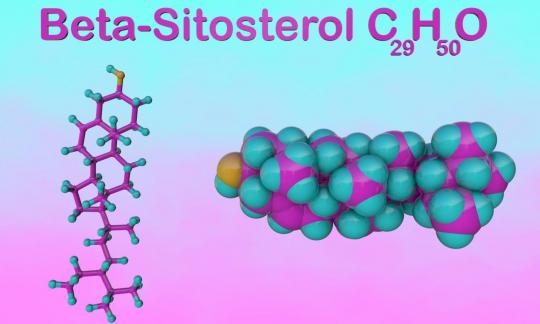

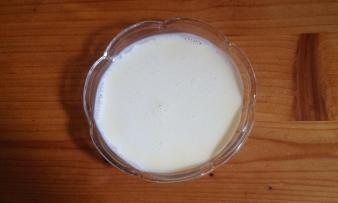

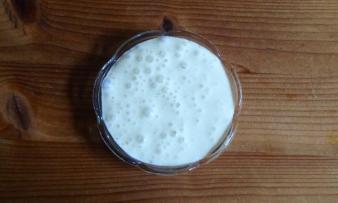
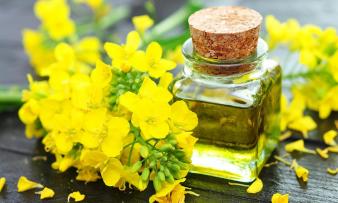
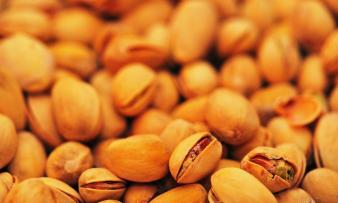
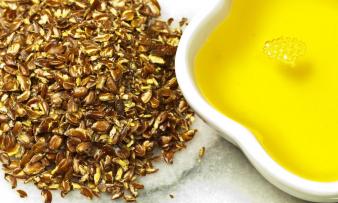
Comments